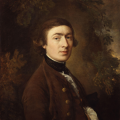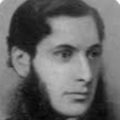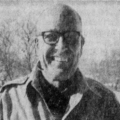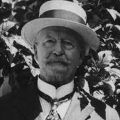Benjamin Alvord
A Passion to Learn
Today is the birthday of Brigadier General, mathematician, and botanist Benjamin Alvord.
Born in Rutland Vermont, Benjamin was always drawn to nature. He graduated from West Point and even spent some time teaching there as a Math Professor. Benjamin fought in the Seminole Wars, the Mexican–American War, and the Civil War.
When he wasn't serving in the military, Benjamin returned to his passions of scholarly activity. His obituary at Arlington says,
“General Alvord lived most of his life in the field, where he was separated from society and books, yet he became a learned scholar; skilled in dialectics, ready in conversation, and polished in his writing. He had a special fondness for mathematics, botany, history, and biography.”
Benjamin published mathematical papers as well as literary articles for magazines like Harpers, and he even wrote a botanical paper on the Compass Plant Silphium laciniatum, which was featured in The American Naturalist.
In 1848, Benjamin described the Compass Plant this way:
“The Silphium laciniatum is a perennial plant of the order Compositae; the first year it bears only radical leaves, the second year and after, it is a flowering herb with four or five leaves on the stem; very rough bristly throughout; Flowers yellow. Found on rich prairies of the Mississippi valley from Minnesota to Texas… It was first seen by me in the autumn of 1839, on the rich prairies near Fort Wayne in the north-eastern portion of the Cherokee nation, near the Arkansas line.”
The leaves of the Compass Plant align north-south, which helps the plant minimize the effect of the midday sun. The north-south orientation guided settlers crossing the prairies who used the plant as a compass during their journey.
Compass Plant is edible. Livestock eats it. Native Americans used it to make tea, a dewormer for their horses, and as a teeth cleaner and breath sweetener. Although before you use the Compass Plant for your teeth or breath, take note of this passage from the Illinois author John Madison,
“Pioneers found that compass plant produced a pretty good brand of native chewing gum. It has an odd pine-resin taste that’s pleasant enough, but must be firmed up before its chewed. A couple summers ago I tried some of this sap while it was still liquid. It’s surely the stickiest stuff in all creation and I literally had to clean it from my teeth with lighter fluid.”
Now, Benjamin was very curious about the polarity of the Compass Plant. In fact, another common name for the plant is the Polar Plant. Benjamin initially theorized that the plant took up a lot of iron, thereby creating a magnet polarity in the leaves, but he later discounted that theory.
The poet Longfellow referred to the Compass Plant in his 1947 poem "Evangeline" about a young woman who is lovesick over missing her boyfriend. FYI Nepenthe is a drug of forgetfulness, and Asphodel is a grey and ghostly plant in the Underworld.
Patience! the priest would say;
have faith, and thy prayer will be answered;
Look at this delicate plant that lifts its head from the meadow;
See how its leaves are turned to the north,
as true as the magnet -
This is the compass-flower,
that the finger of God has planted
Here in the houseless wild,
to direct the traveler's journey
Over the sea-like, pathless,
limitless waste of the desert.
Such in the soul of man is faith.
The blossoms of passion,
Gay and luxuriant flowers,
are brighter and fuller of fragrance;
But they beguile us and lead us astray,
and their odor is deadly.
Only this humble plant can guide us here,
and hereafter Crown us with asphodel flowers,
that are wet with the dews of nepenthe.
This post was featured onThe Daily Gardener podcast:
helping gardeners find their roots,
one story at a time






